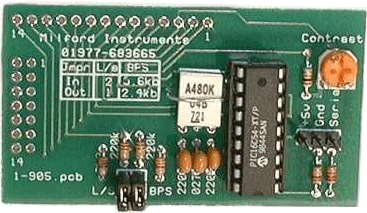 |
||||||||
|
||||||||||||||||||||||||||||||||||||||||||||||||||||||
 |
||
 |
There are two typesof drivers for LCD's: direct or multiplex. DIRECT DRIVE, which is also referred to as STATIC indicates that each segment of a display has an independent connection to the driver. Such displays have the highest contrast ratio over the widest operating temperatures. Static driven displays require drive frequencies between 30Hz and 60Hz. Frequencies below 30Hz will cause the display to flicker, whilst 60Hz will result in excessive current draw. Moreover, if a static-driven display is overdriven, OFF segments can become energized resulting in CROSS TALK. | |
|
Since multiplexed LCD's have voltage applied to the off segments, it is important to minimize voltages that could produce cross talk. Voltage bias levels are used to divide the voltage and reduce cross talk. A driver with a ¼ bias is divided into four levels, Vdd, ¾ Vdd, 2/4 Vdd and ¼ Vdd. Contrast is relative to the RMS voltage on the back plane minus the segment waveform at any given matrix location. Waveforms and their resultant RMS voltage can either be above saturation Von or below the threshold voltage Voff. |
||
|
Contrast is relative to the RMS voltage on the back plane minus the segment waveform at any given matrix location. Waveforms and their resultant RMS voltage can either be above saturation Von or below the threshold voltage Voff. In any case, the voltages can be adjusted to improve the contrast of the display. By varying the external resistor dividers, it is possible to fine-tune the voltages. However, it is more common to employ a 10k S - 20k S potentiometer to adjust the drive voltage. As the number of commons/back-planes increases, the Von/Voff ratio approaches unity (1:1) because of the correlation of properties of the driver waveforms. As the multiplex ratio is increased, the following conditions will result: 1. Reduced viewing cone The minimum number of contacts on a LCD is determined by the formula C=(S/N)+ N, in which S equals the number of segments; ENERGY CONSUMPTION LCD's require little energy to operate. Typically, 5:A to 25:A at 5 volts per square inch for a Twisted Nematic Display. However, there is a temperature coefficient, which is important for multiplexed displays. Moreover, adding a backlight or heater will necessitate additional energy. |
||
|
Copyright 2011 AMP Display. All Rights Reserved
|